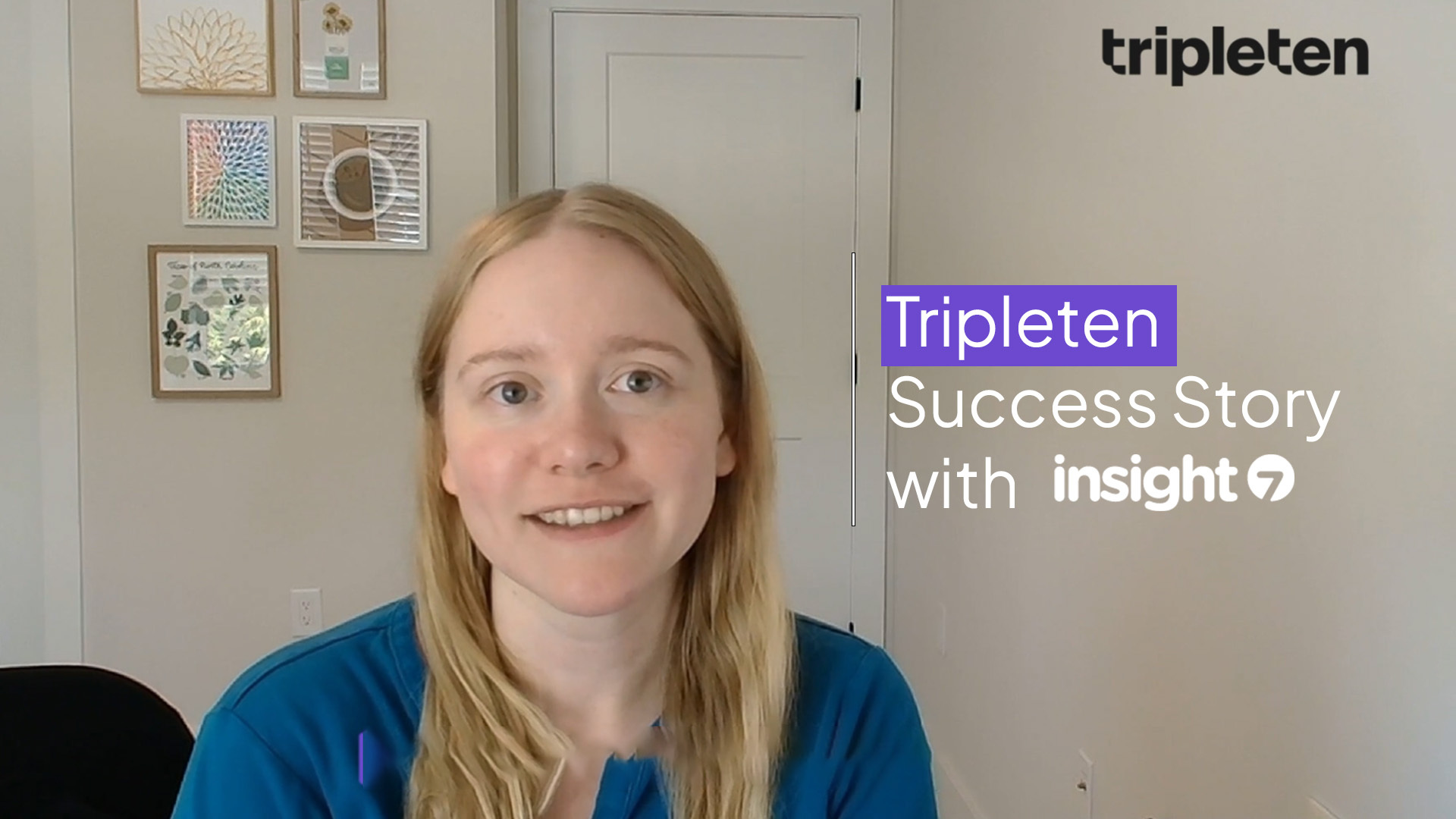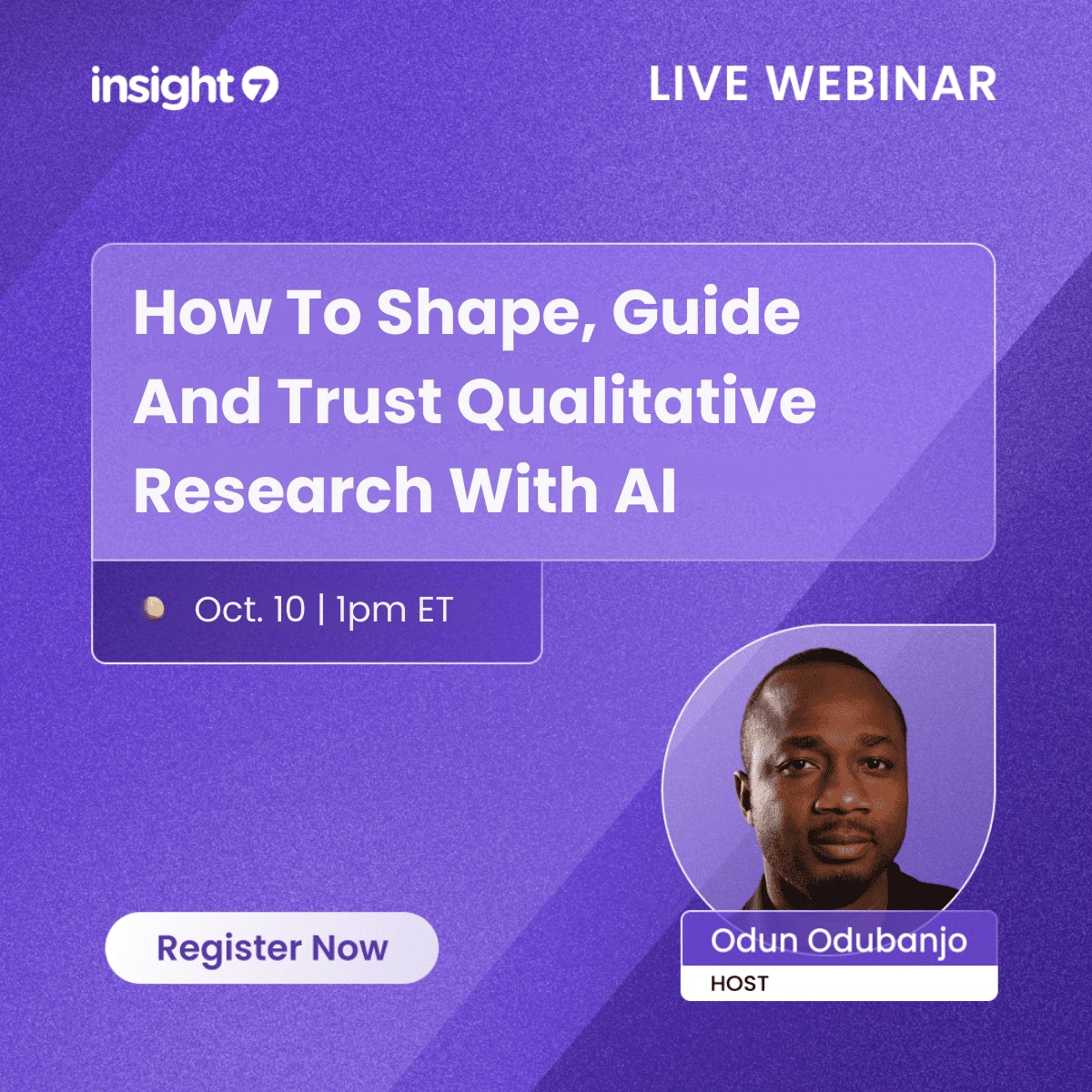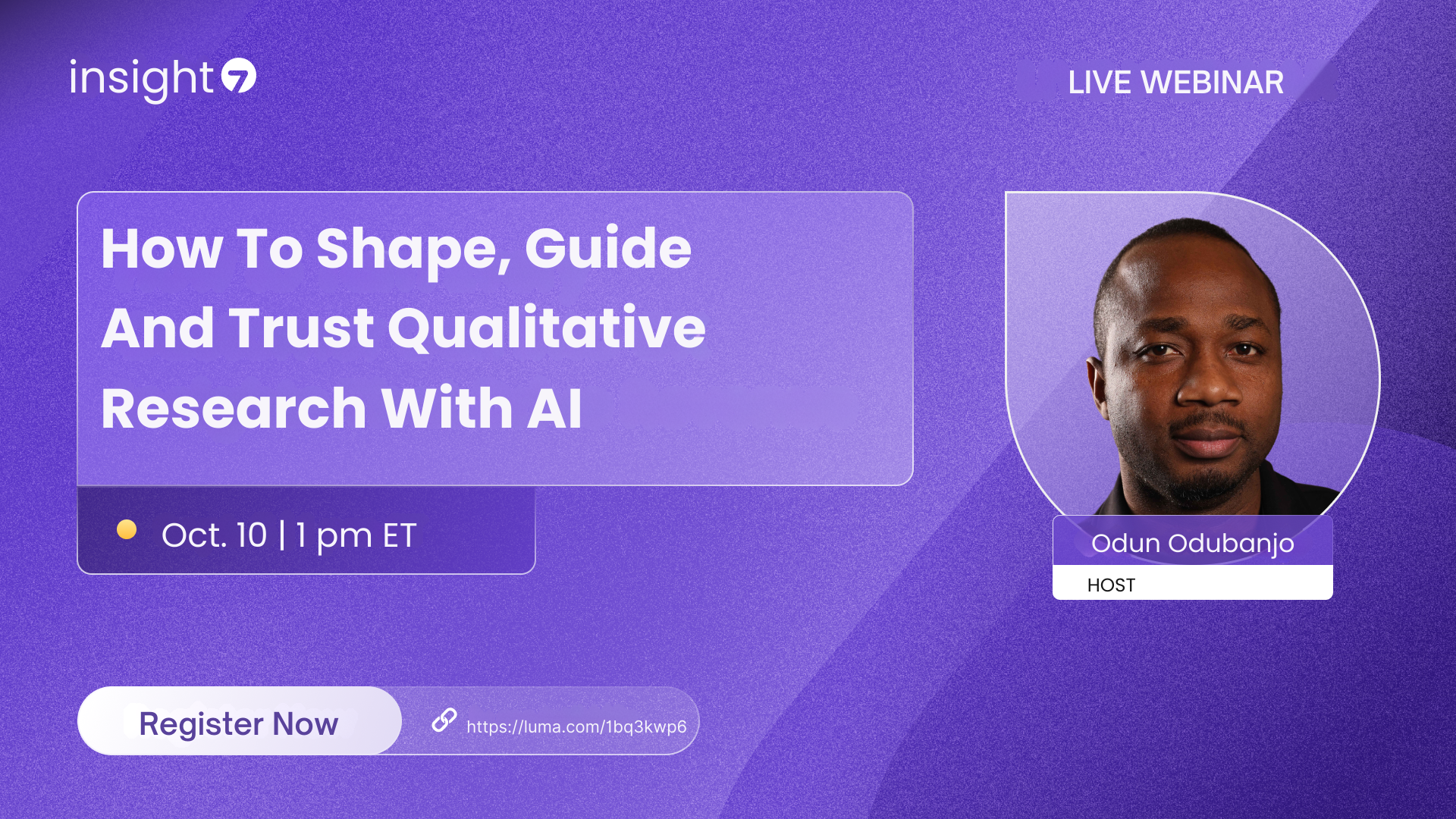How to generate keywords from user experience interviews
-
Bella Williams
- 10 min read
User Insights Extraction is essential in understanding user experiences and generating effective keywords. Engaging with users through interviews allows businesses to gather firsthand insights that reveal their needs and preferences. These conversations can often uncover themes that may not initially seem obvious. By analyzing these insights, organizations can produce keywords that resonate with their target audience.
This process starts with actively listening to user sentiments and experiences during interviews. Once the data is collected, it needs to be methodically organized and examined to highlight recurring patterns and critical pain points. Ultimately, well-structured keywords derived from these insights become powerful tools for enhancing searchability and relevance, fostering a deeper connection with potential users.
Generate visualizations from your qualitative data. At Scale.

Understanding the Role of User Insights Extraction
User insights extraction plays a crucial role in understanding customer experiences and preferences. By comprehensively analyzing user interviews, organizations can uncover invaluable sentiments and behaviors that might not be evident otherwise. The process involves actively listening to users, capturing their thoughts, and extracting actionable insights that inform keyword generation. This rich data serves as the backbone for creating relevant content that resonates with the target audience.
One of the key elements in user insights extraction is identifying recurring patterns and themes from the interviews. This requires meticulous attention to detail, as subtle nuances can indicate major pain points or desires. These insights then transform into keywords that reflect the users' actual language and needs, ensuring the content produced is both relevant and targeted. By integrating user insights into keyword strategies, businesses can enhance their overall marketing and communication efforts, fostering deeper connections with their customers.
Analyzing User Sentiments and Behaviors
To analyze user sentiments and behaviors, it’s essential to take a structured approach. Understanding user emotions reveals critical feedback that impacts product development and user experience strategies. By examining the language used during interviews, we can gather insights that highlight user satisfaction or frustration. This process often involves identifying words or phrases that encapsulate the overall sentiment users feel towards a product or service.
Additionally, assessing patterns in user feedback allows for more targeted keyword generation. When interviewing users, specific themes often emerge, providing a roadmap for future enhancements. It’s vital to categorize these insights into positive and negative sentiments, which can guide your team's actions. Using this information effectively can lead to more actionable outcomes, ultimately improving user experience and customer engagement. Dynamic discussions during user interviews could yield important keywords crucial for developing user-centric products and marketing strategies.
Identifying Patterns and Themes
Identifying patterns and themes is crucial for effective user insights extraction. After conducting user experience interviews, it's essential to sift through the data to uncover recurring themes that inform keyword generation. Start by compiling your interview transcripts and organizing them into manageable segments. This organization allows you to visualize data patterns more clearly, revealing insights such as frequently mentioned pain points or desires.
Next, analyze these patterns to extract significant themes. Look for keywords or phrases that consistently appear across different interviews. For example, if numerous participants note the need for improved communication tools, that theme becomes a valuable keyword. This iterative process not only strengthens your keyword strategy but also enhances your overall understanding of user needs, guiding product enhancements or marketing initiatives. By systematically identifying patterns and themes, you pave the way for richer user insights extraction, ultimately leading to better engagement and satisfaction.
Evaluate Performance on Customer Calls for Quality Assurance.
Process of Extracting Keywords from User Experience Interviews
Extracting keywords from user experience interviews begins with effective interview techniques. Start by asking open-ended questions that encourage participants to share their thoughts freely. This allows for a rich pool of data that can later be analyzed for keywords. Next, use transcription services to convert the audio recordings into text. This step will help in organizing the extensive feedback received during the interviews, making it easier to navigate through the content.
Once the data is transcribed, the focus shifts to user insights extraction. Identify recurring themes, sentiments, and specific terminologies that stand out within the text. This process may involve highlighting important phrases or concepts directly mentioned by users. After gathering insights, categorize these keywords based on their relevance and frequency. Prioritize them to create a list that reflects the core sentiments expressed by users. By following this structured approach, you can effectively capture valuable keywords that enhance understanding of user experiences.
Step 1: Conducting Effective User Experience Interviews
To conduct effective user experience interviews, start by constructing a comfortable environment where participants feel at ease. This setting encourages open and honest communication, allowing users to share their authentic experiences without hesitation. Prepare your questions in advance, focusing on topics that reveal user pain points, motivations, and overall sentiments. Engaging in follow-up questions can often lead to deeper insights that initial queries may not uncover.
Next, actively listen and observe during the interviews. This will help in gathering non-verbal cues that can provide additional context. As users express their thoughts, take notes on keywords and phrases they use frequently; these terms can serve as a foundation for future keyword generation. Remember, effective user insights extraction hinges on creating a two-way dialogue that invites users to share their narratives fully, leading to more meaningful and actionable insights.
Step 2: Transcribing and Organizing Data
Transcribing and organizing data are critical steps in the process of User Insights Extraction. First, begin by obtaining clear transcripts of your user experience interviews. If you have recorded conversations, you can make use of transcription tools to convert audio files into well-structured text documents. This ensures that you capture every detail accurately, creating a solid foundation for further analysis.
Once transcription is complete, the next step is to organize this data for efficient retrieval. Group similar interviews or responses and tag relevant themes or topics within the transcripts. This organization helps in identifying recurring patterns and insights swiftly. Moreover, you can highlight key quotes and statements that encapsulate user sentiments. By executing this step diligently, you pave the way for effective synthesis in the subsequent phases of keyword identification and analysis, ultimately enhancing your understanding of user needs.
Step 3: User Insights Extraction for Keyword Identification
Extracting user insights is a crucial step in generating effective keywords from user experience interviews. By analyzing participant feedback and discussions, businesses can unearth valuable insights that reflect user needs and expectations. This extraction process involves meticulously sifting through transcriptions or summaries to identify key themes, emotions, and pain points relevant to the user experience.
To execute this effectively, follow these steps:
Identify Key Themes: As you review the insights, highlight repeated phrases or concepts mentioned by users. These often serve as strong candidates for keywords.
Analyze User Language: Pay attention to the terminology used by participants. Their language can reveal valuable keywords that resonate with their experiences.
Gather Evidence and Context: Context enriches keyword relevance. Link identified keywords back to specific quotes or scenarios discussed during the interviews.
Collaborate with Your Team: Utilize collective insights from various stakeholders to enhance keyword significance and coverage.
By applying these strategies, you can ensure your keyword identification process is both insightful and user-driven. This will ultimately help in creating content that is more aligned with your audience’s expectations.
Step 4: Categorizing and Prioritizing Keywords
Once you have extracted keywords from user experience interviews, the next vital step is categorizing and prioritizing them. This process allows you to structure the insights you've gathered, ensuring you focus on the most relevant themes. To begin, group the keywords into categories based on their commonalities, such as user needs, frustrations, or desired features. This organizes the data logically and helps identify overarching trends that can direct your strategy.
After categorization, it’s essential to prioritize the keywords based on their significance and relevance. You may choose to rank them by frequency of mention or align them with your project's strategic goals. Highlighting high-priority keywords ensures that your efforts will be concentrated where they can yield the most impactful results. This systematic approach to categorizing and prioritizing keywords enhances your ability to extract valuable user insights effectively, guiding your next steps in product development and marketing strategies.
Tools for Facilitating User Insights Extraction
To effectively facilitate User Insights Extraction from user experience interviews, various tools enhance the process throughout the stages of data collection and analysis. Each tool has functionalities that streamline the extraction and interpretation of valuable insights. These insights often reveal user needs, pain points, and preferences, which are instrumental in generating relevant keywords.
Several platforms can greatly aid this journey. For instance, some tools allow for easy transcription of user interviews, ensuring no detail gets overlooked. Others provide intuitive interfaces for organizing data, making it accessible for users to extract insights efficiently. Features that visualize conversations help identify significant themes and patterns, allowing teams to generate keywords based on real user feedback. The ability to synthesize these insights into actionable reports empowers organizations to optimize their keyword strategies effectively. Utilizing the right tools not only accelerates the extraction process but also enriches the overall quality of the insights gathered.
insight7
In this section, we explore the significance of User Insights Extraction in generating relevant keywords from user experience interviews. By effectively capturing user sentiments and experiences, you can unlock a wealth of data that informs your keyword strategy. Listening carefully during interviews helps identify recurring themes that can be transformed into actionable keywords, guiding your content creation and targeting efforts.
A structured approach to User Insights Extraction involves several key steps. First, ensure your interviews are thoughtfully conducted, encouraging open dialogue with users. Next, transcribe and organize the data systematically for easy analysis. Once the data is prepared, you can extract insights that reveal vital keywords relevant to user needs and pain points. Finally, categorize and prioritize these keywords to align with your overall objectives. This process not only enhances your keyword strategy but also strengthens your understanding of your audience's voice and preferences.
Dovetail
Dovetail serves as a pivotal tool in the user insights extraction process, particularly when it comes to developing effective keywords from user experience interviews. By providing a platform where conversations with customers can be managed and analyzed efficiently, Dovetail allows organizations to identify crucial themes and sentiments that emerge from user interactions. This capability ensures that businesses can extract meaningful insights that drive strategic decisions.
When users engage with Dovetail, they can easily transcribe and organize interviews, leading to more actionable conclusions. The tool’s simple interface aids in connecting user feedback to relevant keywords, which are essential for enhancing marketing strategies. By streamlining data analysis, Dovetail empowers teams to pinpoint valuable customer insights quickly. Ultimately, this not only improves internal collaboration but also enhances the overall agility of organizations to respond to market demands effectively.
Lookback
Lookback plays a vital role in enhancing User Insights Extraction from user experience interviews. As you analyze previously conducted interviews, identifying key themes and sentiments becomes essential. Lookback allows for a thorough examination of past interactions, revealing critical insights that can guide future product development and strategy.
One effective approach involves reviewing recorded sessions to capture nuanced user experiences. Here are some core steps to maximize this process:
Note Key Moments: Identify and timestamp significant areas in the conversation where users express strong feelings or make important observations.
Categorize Insights: Group these observations into various categories based on themes such as usability, satisfaction, or pain points.
Synthesize Findings: Finally, summarize the insights, emphasizing the keywords that emerge consistently. This method not only strengthens the understanding of user needs but also facilitates more effective keyword generation for future initiatives. By leveraging insights from past interviews, teams can create targeted strategies that resonate more deeply with their audience.
UserTesting
UserTesting plays a crucial role in the process of user insights extraction. By enabling real-time interaction with users, it uncovers valuable feedback that might otherwise be overlooked. Through structured interviews and intuitive prompts, researchers can gather rich narratives and sentiments that are essential for understanding customer needs. This firsthand information enriches the data pool, allowing teams to make data-driven decisions.
When analyzing the feedback collected through UserTesting, it's essential to look for recurring themes and specific terms. This analysis helps in identifying keywords that resonate with users and align with their experiences. The insights gleaned from these interviews can guide content creation and marketing strategies, ensuring that they effectively address user pain points and aspirations. By systematically integrating insights from UserTesting, organizations can enhance their keyword generation efforts and ultimately improve their overall user engagement.
Otter.ai
Using technology to enhance user experience interviews can significantly streamline the process of User Insights Extraction. One effective tool is a powerful transcription software that enables users to convert their spoken conversations into written text seamlessly. This software captures every detail of interviews, allowing researchers to focus on understanding user sentiments and behaviors rather than getting bogged down with note-taking.
Once interviews are transcribed, the real magic begins. Researchers can scavenge through the textual data, identifying key phrases, recurring themes, and user sentiments. By analyzing this information, you can generate relevant keywords that encapsulate users' thoughts and feelings, ultimately feeding into a more robust keyword generation strategy. This not only aids in developing impactful marketing content but also enhances product development efforts by ensuring alignment with user needs and expectations. Embracing tools that facilitate this extraction process leads to richer insights and better decision-making.
Conclusion: Synthesizing User Insights Extraction for Effective Keyword Strategy
The journey of synthesizing user insights extraction leads to a refined keyword strategy, essential for any successful content initiative. By transforming raw data from user experience interviews into actionable insights, businesses can align their keywords with genuine user needs. This approach ensures that the developed keywords resonate with target audiences, enhancing visibility and engagement in search engines.
Moreover, effective keyword strategies gleaned from user insights can significantly influence marketing efforts. The interplay between user sentiments and keyword selection creates a more relevant and targeted approach. Consequently, this synthesis not only improves search rankings but also fosters stronger connections with users by addressing their true concerns and desires.







